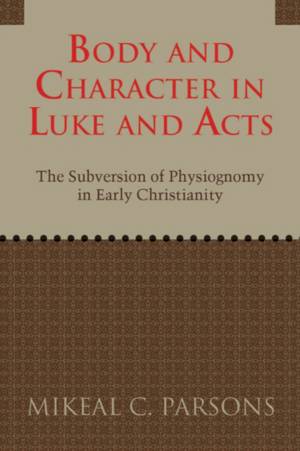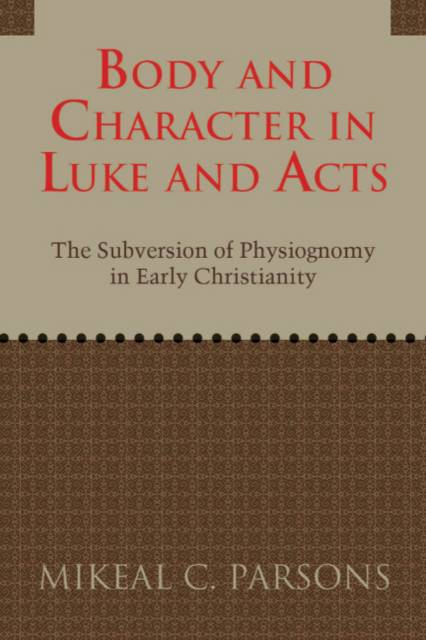
- Retrait gratuit dans votre magasin Club
- 7.000.000 titres dans notre catalogue
- Payer en toute sécurité
- Toujours un magasin près de chez vous
- Retrait gratuit dans votre magasin Club
- 7.000.0000 titres dans notre catalogue
- Payer en toute sécurité
- Toujours un magasin près de chez vous
Body and Character in Luke and Acts
The Subversion of Physiognomy in Early Christianity
Mikeal C ParsonsDescription
Early Christianity developed in a world where moral significance was often judged based upon physical appearance alone. Exploring the manifestations of this ancient "science" of physiognomy, Parsons rightly shows how Greco-Roman society, and by consequence the author of Luke and Acts, was steeped in this tradition. Luke, however, employs these principles in his writings in order to subvert the paradigm. Using as examples the bent woman (Luke 13), Zacchaeus (Luke 18), the lame man (Acts 3-4), and the Ethiopian eunuch (Acts 8), Parsons shows that the Christian community--both early and present-day--is established only in the image of Jesus Christ.
Spécifications
Parties prenantes
- Auteur(s) :
- Editeur:
Contenu
- Nombre de pages :
- 192
- Langue:
- Anglais
Caractéristiques
- EAN:
- 9781602583801
- Date de parution :
- 15-06-11
- Format:
- Livre broché
- Format numérique:
- Trade paperback (VS)
- Dimensions :
- 152 mm x 229 mm
- Poids :
- 290 g

Les avis
Nous publions uniquement les avis qui respectent les conditions requises. Consultez nos conditions pour les avis.






